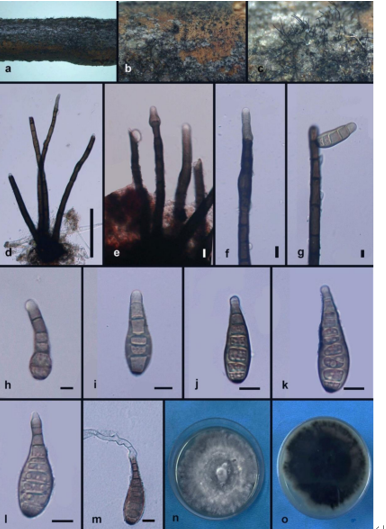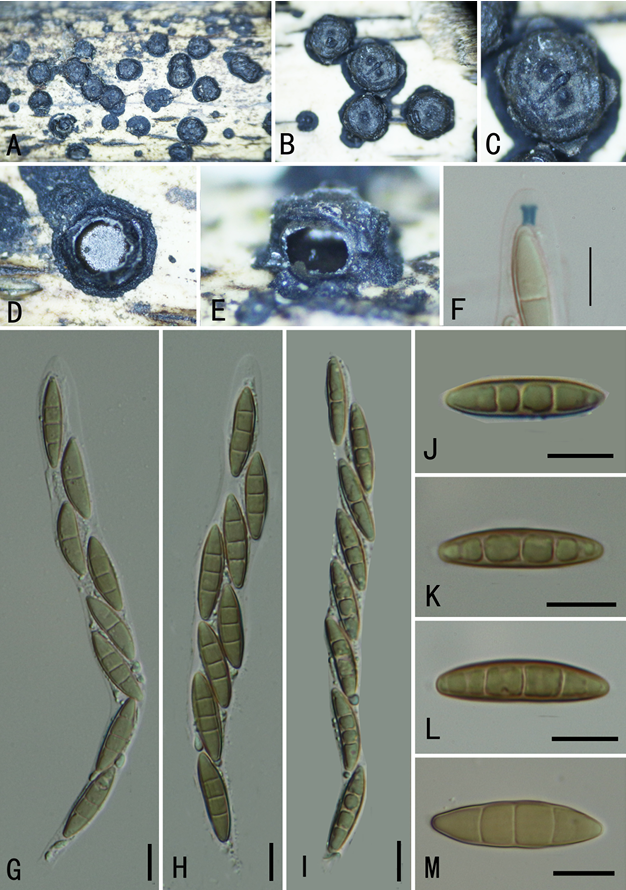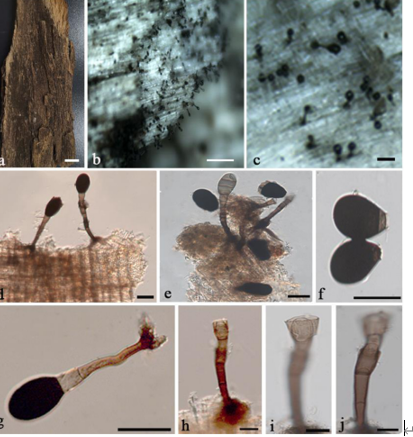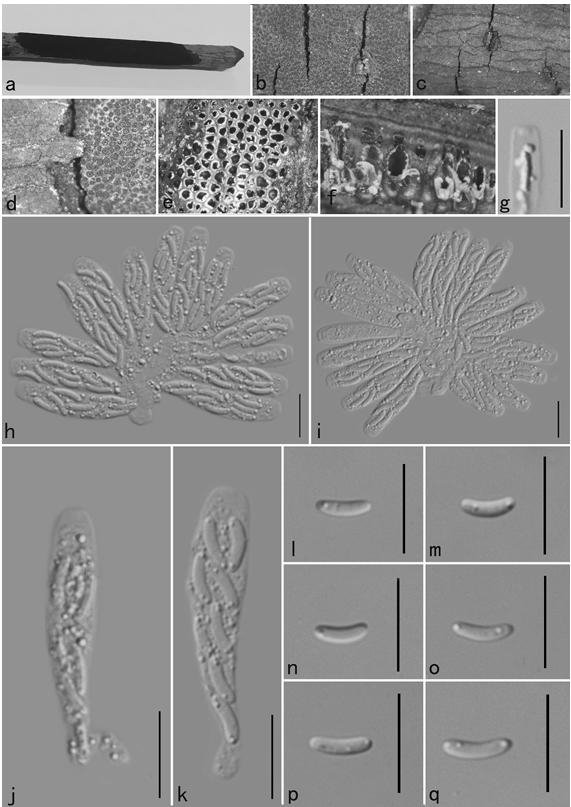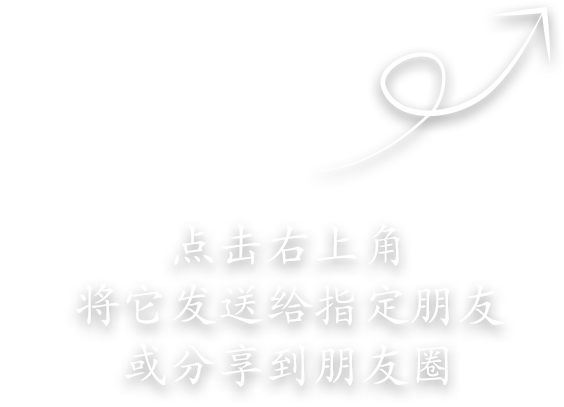Ophiostoma kunlunense R.L. Chang & Z.W. de Beer 2020
MycoBank MB 827335
Holotype: China: Qinghai province: Maixiu Forest Farm, from Uropodoidea sp. in gallery of Ips shangrila on Picea purpurea, 8 Aug. 2010, S. J. Taerum (PREM61583 – holotype (dried culture); CMW41927 = CBS141903 – extype culture).
Morphological description
Sexual morph not observed. Asexual morph pesotum-like, occurring singly or in groups of up to 15, macronematous, synnematous, erect, (511–) 705–1729.5 (− 1301) μm long, including condiogenous apparatus. Conidia hyaline, 1-celled, smooth, oblong, clavate or obovoid (3.5–) 3–6 (− 8) × 1.5–2(− 2.5) μm, accumulating in a white, gelatinous mass at the apex of the synnema.
Culture characteristics: Colonies hyaline or dark brown when synnemata form. Mycelium superficial on the agar. Pesotum-like asexual morph dominant in the cultures. Optimal temperature for growth 20 °C, reaching 56.6 mm diam in 10 d. No growth observed at 5 °C or 30 °C and above.
Habitat: From Uropodoidea sp.
Distribution: In China.
GenBank Accession: ITS/ITS2-LSU: MH121648;BT: MH124451; EF: MH124515
Notes:
Reference: Runlei Chang1,2, Tuan A. Duong1, Stephen J. Taerum1 et al.
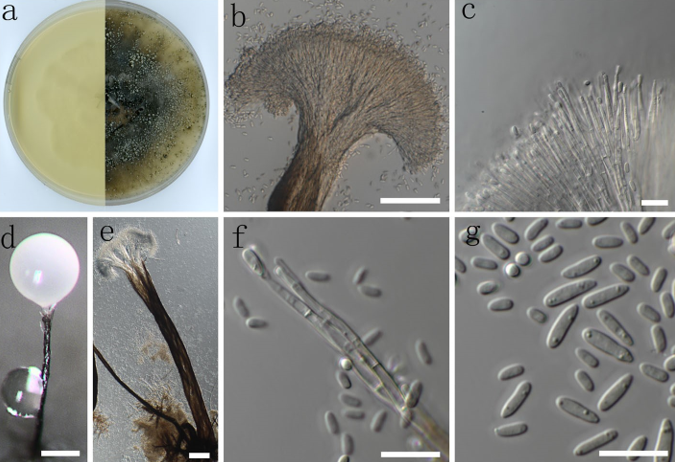
Morphological characters of asexual structure of Ophiostoma kunlunense sp. nov. a Cultures on malt extract agar (MEA); b, d, e Pesotum asexual state; c, f conidiogenous cells; g conidia. –Scale bars: b = 50 μm; c, f, g = 10 μm; d = 200 μm; e = 100 μm


